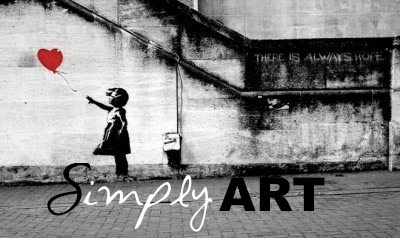Born from Russian parents, Spahn has had a productive career. Many of his paintings have served as posters for sportive events such as for Paris's first tennis open in 1986, in 1992 for France's F1 Grand Prix up to the Rugby poster for the French Stadium. In an article from 2009 by Patrice de la Perrière, Spahn said: "I try through my works to transmit to the public a certain concept of sportive life, favoring movement and precise motion in a determined context." Upon reading this, I understood that my impression of "Régate America" was not a coincidence and that Victor Spahn was an artist of movement and energy.
On his website I discovered many paintings demonstrating the importance of speed and dynamism as a core subject for the artist. One of them was blatant and easily comparable. Indeed, Spahn based one of his works on an old painting, but presenting it in a totally different way. It is the painting of Napoleon crossing the pass of St-Bernard in the Alpes around 1800. The first version belongs to Jacques-Louis David, official painter of Napoleon Bonaparte, done between 1811 and 1815. The other one is done by our discussed painter almost two centuries later. In the first version, David gives us a very still image of the emperor, where the important details are centered on Napoleon. The image is there to skyrocket Napoleon's popularity and thus magnify the persona. It represents how glorious and imposing, how richly decorated, how determined he is. Moreover, on the bottom left corner, Napoleon's name is placed next to Hannibal, the famous commander, as to place these two great men side by side.
On the other hand, Spahn's work is only centered on the action done by Napoleon and his horse. Indeed, he erases all traces of the Alpes, of the fellow soldiers, of the scribbled rocks. He places Napoleon in a total void. There are no hints of time or space, we don't even have details for his face or anything that might help us to replace him. If it wasn't for the title or general knowledge, we would have no idea of who he is. This means Spahn concentrates himself much more on the action done by Napoleon and his horse than on details of richness and prowess in order to uplift the person's qualities. Spahn's version is realistic on the progression of movement, focusing on the importance of the strenght required for the accomplishement of the action. The kicking movement of the horse's legs and the forward thrusting movement of Napoleon's body are what Spanh want's us to see. He seeks to demonstrate to us the progression of movement involved in the action. In David's version, Napoleon is painted very still, very naturalistically, as thus a photograph had been taken of him whereas in Saphn's version, we have a total loss of details in order to make the viewer center himself on the progressive dynamics of the image. As such, we perceive how it is the importance of motion as opposed to anything else that triumph in his paintings.

Clearly, Spahn's work is concentrated into the demonstration of movement, speed and dynamism. His work makes me think a lot of the futurist movement in visual arts. Started by an Italian poet, it centered itself on the beauty of speed and how they would be able to catch movement and it's progression on a still image. Filipo Marinetti, the creator and writer of the Futurist manifesto, once said as regards to the Futurist movement: "The splendor of the world has been enriched by a new beauty: The beauty of speed." I believe this quotation is at the center of Spahn's work, centering his art on the importance of movement.
Following are two other works of art that exemplify and relate to what Victor Spahn seeks to achieve. The first one is another work by Spahn. The second one, a photograph by the futurist artist Bragaglia. The similarity between these two works is strongly apparent. Both of them concentrate themselves on the movement done by the musicians and not who they are or any other personnal detail. Again, the fact that Spahn erased the face of the musician, just as he did with Napoleon, tip us on the idea that they are not important. In his work, Bragaglia sought to take photographs that would present movement and it's progression. He would keep the camera's shutter open for a long time in order to catch movement. In his painting, Spahn also tries to present the movement done by the musician. How his right hand goes up and down and his left arm back and forth. It is only the musician's body movements that matter and on which we have to focus on. The instrument, compared to the body of the musician seems completely stable and solid.
Many comparisons could follow between artists that center themselves on particular facial expressions or that go extensively on details and Victor Spahn's disinterest of it. Nevertheless, I believe these two comparisons exemplify and clarify Spahn's precocupations for movement by comparing him to his opposite (David) and highlighting the similarities with ressembling artists. Interestingly enough, Spahn not only depicts music and horses but also paints many various sorts of sports such as Golf, Rugby, dancing and ice skating. This demonstrates a deep observation by the artist of how these different sports evolve in their movement, how they are executed. Since 2006, Victor Spahn has been depicting cities and landscapes. For an artist that is used to paint sports and movement, this new aesthetical interest gives a quite fascinating result. By clicking on the article's title, you will be able to acces directly to his website and explore his art by yourselves.
Here is a slideshow of some of Spahn's work that I like the most.



No comments:
Post a Comment